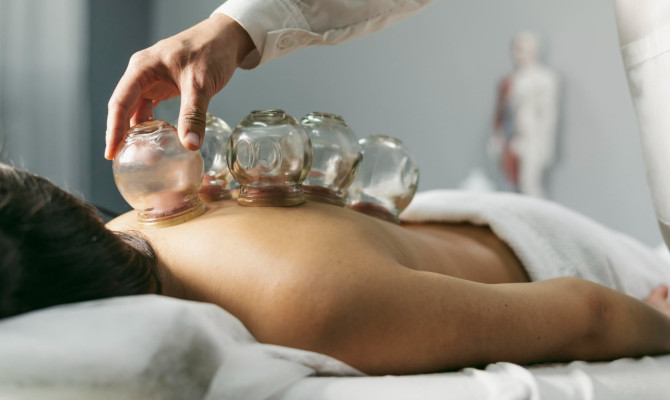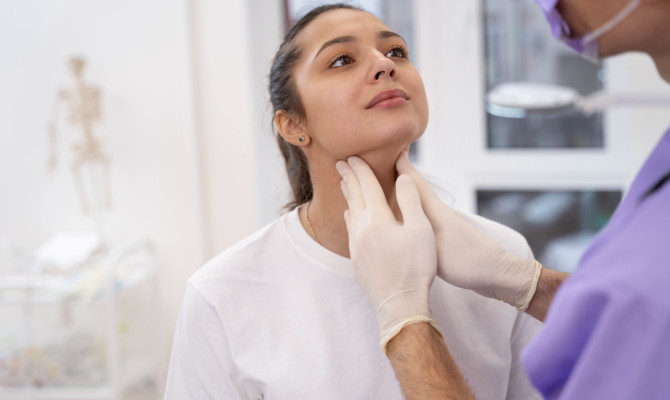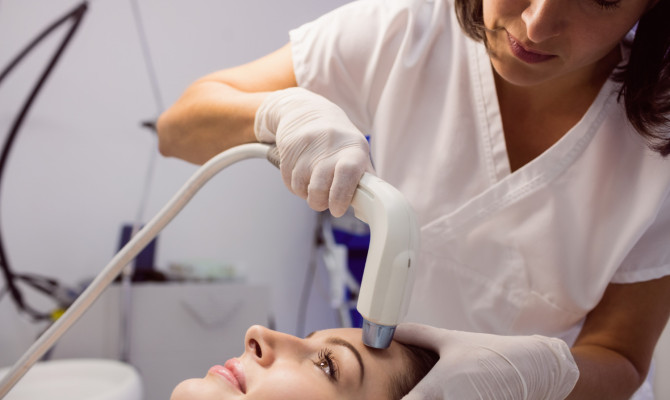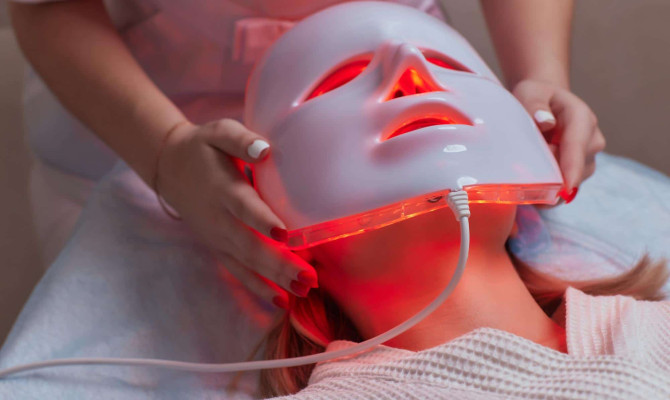Understanding Low Testosterone : Causes, Symptoms and Treatment

- Low Testosterone
- 22 Aug 2023
Overview
About Testosterone
Most of us are aware of testosterone’s basic functions in male development and function, primarily as the hormone that brings secondary sexual changes in males. Testosterone production begins during the onset of puberty. When boys hit puberty, testosterone helps in the development of manly features such as facial hair growth, low pitched voice, body hair growth and muscle mass.
Testosterone is basically the male sex hormone synthesized in the testicular sac. Hence, Testosterone is required for the production of sperms. Both the brain and the testicles (testes) are in charge of regulating testosterone. Testosterone levels usually drop after the age of 30 years.

What is low testosterone?
Testosterone levels can differ widely from person to person. The normal testosterone range for men lies between 300-1,000 ng/dL.
- Fluctuations in testosterone levels throughout the day is a physiological response. The majority of males show peak testosterone production during the early morning hours. The testosterone production declines during the nighttime as the testes don’t produce adequate testosterone.
- A gradual fall in testosterone production is common and expected particularly in 40s, 50s, 60s, and beyond.
- While a gradual decline in testosterone production is a basic and natural process, certain men may experience an unusually rapid decrease in testosterone levels.
- Low testosterone is the deficiency of testosterone that occurs in males when their body is unable to synthesize enough testosterone. It is also known as hypogonadism.
It is characterized by a total testosterone level less than 300 ng/dL and the presence of three sexual symptoms:
- Erectile dysfunction.
- Reduced morning penile erection.
- Decreased libido
Prevalence
Prevalence
The worldwide occurrence of testosterone deficiency (TD) varies between 10% and 40%. Global variations exist in the prescription patterns of testosterone replacement therapy (TRT). In the United States, the prescription rate of testosterone replacement therapy (TRT) is considerably higher compared to other countries. It has shown a threefold increase over the past decade, particularly among men with normal testosterone levels (eu gonadal men).5Prevalence| Researched based study from Nlm.nih.gov
Causes
Causes of Low testosterone
There are numerous factors that influence the levels of testosterone production in men. They range from your diet to your lifestyle.
Few common causes include:
- Obesity
- Diabetes
- Alcoholism
- Organ damage
- Obstructive sleep apnoea
- Steroid abuse
- Metabolic disorders
- Other health conditions
- Aging
- Klinefelter syndrome
- Undescended testis
- Mumps orchitis
Obesity
- A study showed that being overweight 1Causes| Researched based study from Nlm.nih.gov is linked to fall in total testosterone along with decreased levels of hormones like follicle stimulating hormone (FSH). Obesity and low testosterone levels may negatively impact fertility, breathing difficulties, ability to exercise, cholesterol levels, fatigue, mood, and overall well-being.
Diabetes
- Type 2 diabetes is more likely to prevail into low testosterone levels.2Causes| Researched based study from Nlm.nih.gov
Alcoholism
- Excess of anything is bad. Alcohol consumption above the average limit will have numerous effects on your sexual well being. It can cause reduced testosterone levels and other hormones. Long term drug abuse using opioids has also shown decreased testosterone levels.
Organ damage
- Infections, surgeries, chemotherapy, radiation and specific drugs could possibly impair the functioning of organs responsible for testosterone generation and regulation. Damage to the liver and kidneys will hamper the capacity of the body to produce testosterone.
Obstructive Sleep apnea
- It is a sleep disorder. OSA is characterized by episodes of upper airway obstruction. Sleep is the major contributor to good testosterone production. Because of the OSA, sleep quality and duration will be affected resulting in reduced testosterone synthesis.
Steroid abuse
- Anabolic steroids are used to build muscle mass and strengthen it. These steroids can interfere with the physiological testicular function, leading to testicular degeneration (decreased testicular size) and decreased testosterone levels.
Metabolic disorders
- Metabolic disorders like hemochromatosis (additional building up of iron) can lead to low testosterone levels.
Other health conditions
- These include HIV/AIDS, pituitary gland tumors (prolactinoma), medications like painkillers will have an effect on testosterone synthesis.
Aging
- Testosterone levels commonly decrease with age. The chance of decrease in testosterone levels below the normal range tends to rise with the natural progression of aging.
Klinefelter’s syndrome
- It is a genetic condition with chromosomal alteration in male where males have an additional X chromosome present.
Undescended testis
- Undescended testis refers to the absence of one or both testicles in the scrotum at birth. Surgical intervention is necessary to relocate undescended testicles into the scrotum if they have not descended by the age of 6 months.
Mumps orchitis
- There is inflammation of the testes because of mumps infection. It can be prevented by immunization using the MMR vaccine.
Medications
- Use of medications like opiods, goserelin, leuprolide, metoclopramide, triptorelin, psychoactive medications, estrogen etc can decrease levels of testosterone.
Symptoms
Signs and symptoms of Low testosterone
Low testosterone can lead to various symptoms, including changes in muscle mass and bone density, energy levels and sexual function.
If you have low testosterone levels you may show various symptoms like:
- Reduced sex drive
- Fall in the volume of semen and low sperm count
- Decrease in testicular size
- Loss of body hair
- Sleep disturbances
- Hot flashes
- Loss of muscle mass
- Increase body fat
- Memory loss
- Anemia
- Male breast development(Gynecomastia)
- Erectile dysfunction
- Anorchia
- Medications
- Mood changes
Reduced sex drive
- The primary indicator of low testosterone levels is decreased sex drive aka loss of libido. You may experience a decrease in sexual interest or a reduced thoughts related to sexual activity. Age-related decline in sexual desire is common. However, it is important to note that low testosterone levels can lead to a more significant decrease in sexual desire, especially among younger men.
Fall in the volume of semen and low sperm count
- The key androgens responsible for stimulation of prostate and seminal vesicles for the production of semen are testosterone and dihydrotestosterone (DHT). Low testosterone levels will alter the body’s capacity to produce sperms, resulting in low sperm count. In a few cases, it can also result in infertility.
Decrease in testicular size
- As the testosterone levels decrease, testicular size may diminish along with a reduction in sperm production. A study published in the journal Andrologia 3Symptoms| Researched based study from Nlm.nih.gov discovered a correlation between below-average testosterone levels and diminished testicular volume.
Loss of body hair
- Since testosterone is responsible for the growth of hair, low testosterone levels may show decreased growth of hair on the body as well as the face.
Sleep disturbances
- Reduced testosterone levels may show insomnia. It is the inability to sleep or difficulty in falling asleep due to lower levels of testosterone.
Hot flashes
- Episodes of sudden facial and chest warmth including sweating, flushing are the signs of hot flashes. Low testosterone levels will aggravate hot flashes.
Loss of muscle mass
- Testosterone is the anabolic hormone. It is important for building muscle mass. Low testosterone levels will present with decreased physical strength due to loss of muscle mass. You may also feel it difficult to exercise, lift weights etc.
Increased Body Fat
- Obesity is linked with testosterone levels which may further stimulate the chances of increased body fat that affects testosterone production. Increased fat due to low testosterone levels is also associated with increased lipid levels, increase the risk of heart diseases and high blood pressure.
Memory loss
- Low testosterone levels have been associated with difficulties in concentration, speech , and memory. You might notice cognitive impairment, commonly referred to as “brain fog,” as well as difficulties with memory function.
Anemia
- Testosterone plays a part in red blood cell production. Research 4Symptoms| Researched based study from Nlm.nih.gov shows that men with low testosterone have reduced RBCs and thus develop anemia.
Male breast development
- It is also known as Gynecomastia. Low testosterone levels can lead to gynecomastia, a condition characterized by the abnormal growth of breasts in males. Gynecomastia can result in nipple swelling or tenderness. Studies indicate that gynecomastia can result from an estrogen and androgen hormonal imbalance.
Erectile dysfunction
- Low testosterone levels will contribute to male sexual performance disorders like erectile dysfunction. Erectile dysfunction is the inability to achieve erection or difficulty to keep an erection for long. You will also lose the ability to achieve erections while you’re sleeping (Spontaneous erections).
Anorchia
- Absence of testicles by birth.
Mood changes
- Testosterone has an impact on mood changes. Low testosterone means higher is the risk of developing depression and bipolar mood disorders.
Diagnosis
Diagnosis of Low testosterone
Low testosterone levels are diagnosed by:
Luteinizing Hormone (LH)
- Dysregulated levels of LH indicates pituitary gland disorder, leading to low testosterone.
Total testosterone levels
- These levels are less than 300 ng/dL.
Prolactin levels
- Prolactin levels are altered in case of pituitary tumors.
Follicle Stimulating Hormone (FSH)
- FSH levels are examined to know sperm morphology.
Estradiol Hormone Test
- It is done to rule out Gynecomastia.
Glycosylated Hemoglobin (HgbA1C) Blood Test
- HbA1C is performed on diabetic patients to know the blood glucose levels.
Bone Density Tests
- Reduced testosterone has the potential to promote bone loss.
Karyotyping
- It is the chromosomal analysis done to determine shape, size and number of chromosomes.
Physical examination
- It is usually nonspecific and insignificant. Typical findings include loss of body hair, obesity, anemia, osteoporosis etc. Testicular volume will also be decreased (normal: 15 to 30 mL). Testicular mass must be ruled out by palpation technique.
Treatment
Treatment of Low testosterone
It is possible to have minimal concentrations of testosterone without experiencing any symptoms. Low testosterone levels and accompanying symptoms do not necessarily require immediate initiation of low testosterone therapy. If the doctor can determine the cause of decreasing levels, such as weight gain or a specific medication, they may initially focus on resolving that issue.
The treatment line includes:
Skin patch
- The transdermal patch is applied daily, specifically in the evening. It gradually delivers small doses of the testosterone hormone through the skin. They are available in 2 mg and 5 mg dosages. The transdermal patches are less toxic to the liver, when compared to the oral medications.
Gels
- Upper arms, thighs or shoulders are the sites where topical gels can be applied everyday. Ensure you have clean hands before applying any gel. It is the most common solution for low testosterone employed in the US. Commonly used testosterone gels are Testim® and AndroGel®.
Oral testosterone
- Undecanoate is a tablet form of testosterone. It is used by people with specific health problems like Klinefelter syndrome or pituitary gland tumors.
Nasal gel
- Testosterone gel can be applied to each nostril thrice a day.
Buccal tablets
- These are adhesive pills applied to the gums twice daily. Testosterone has better absorption into the bloodstream via the gums, buccal tablets are a great option.
Pellets
- They are also known as Testosterone implants. Pellets are usually implanted around the buttocks or hips. They tend to release testosterone slowly. You can replace them every 3 to 6 months.
Injections
- Testosterone levels can rise to higher levels after a few days of injecting it. You can administer it every 1-2 weeks in the muscle.
Erectile Dysfunction Medication
- Erectile dysfunction can be treated using sildenafil (the active ingredient in Viagra) to achieve better and long lasting erection. Other medications for erectile dysfunction can be tadalafil and Stendra. These are newer oral drugs for ED that have a lesser risk of causing adverse effects.
Testosterone Replacement Therapy
Testosterone Replacement Therapy(TRT) for Low testosterone
- Testosterone replacement therapy is also known as testosterone therapy. In this therapy, exogenous testosterone is given to the patient to increase the testosterone levels. It helps in dealing with u
- the symptoms associated with low testosterone levels. It is a type of hormone replacement therapy for men. It Can be in the form of gels, patches, injections, or oral as discussed above.
- It typically requires a period of around 4 to 6 weeks to notice observable improvements after testosterone replacement therapy. This delay in achieving a normal testosterone level is due to the time required for the hormone to accumulate in the bloodstream.
- It is important to note that the beginning of testosterone utilization can lead to a decrease in the body’s natural testosterone production.
Possible advantages of testosterone replacement therapy include:
- Increased sexual desire.
- Improved sexual function and higher erectile performance.
- Enhanced emotional state and improved overall well-being.
- Enhanced muscle strength and bone density.
Testosterone replacement therapy can be advantageous, particularly for individuals with significantly low testosterone levels.
However, it can also have adverse effects like:
Pruritus and/or irritation at the site of application:
- Skin redness and irritation may occur with the use of a testosterone patch or gel.
Pain and discomfort:
- Studies indicate that over 80% of men experience varying levels of soreness following intramuscular injection of testosterone.6TRT| Researched based study from Nlm.nih.gov
Infection risk.
- Intramuscular injections may lead to bacterial infections, although this is rare.
Elevated red blood cell (RBC) count.
- Testosterone promotes the synthesis of RBCs. The higher production of red blood cells can lead to increased blood thickness, thereby resulting in the formation of blood clots.
Increased cardiovascular disease risk:
- Testosterone replacement therapy is closely linked with an increased risk of cardiovascular complications, such as stroke, heart attack, and heart disease.
Acne outbreaks
- Testosterone, being an androgen, can promote sebum production and consequently contribute to the development of acne.
Male pattern baldness
- It refers to the common form of hair loss that affects men. It is also known as androgenic alopecia.
Sleep apnea
- Studies indicate that testosterone replacement therapy may exacerbate obstructive sleep apnea (OSA), leading to impaired breathing.7TRT| Researched based study from Nlm.nih.gov
TRT is not done in patients with
- Breast cancer
- Prostate cancer
- Prostate integration
- Increased hematocrit levels
- Severe sleep apnea
- Lower urinary tract symptoms
- Stroke
- Thrombophilia
- Heart attack
- Heart failure
TRT is also not recommended for men who would like to conceive in the future.
Natural ways

Natural ways to increase the levels of testosterone
Testosterone is the primary male sex hormone. Thus, before you decide to get you don’t replacement therapy, you must try out natural ways to increase your levels of testosterone.
Here are a few natural and significant ways of boosting testosterone levels:
Get enough sleep
- This is one of the highly effective ways of enhancing test restaurant synthesis. According to a study done in 2011,8Natural ways| Researched based study from Nlm.nih.gov it was proved that young males who were sleep deprived (five hours per night) showed testosterone levels of 10 to 15% below the normal.
Get enough Vitamin D
- Low testosterone levels are attributed to deficiency of vitamin D. This micronutrient is important for maintaining healthy hormone synthesis. So, ensure that you get enough sunlight or take vitamin D supplements.
Include zinc rich food in the diet
- Consumption of Zinc deficient foods will lead to lower dihydrotestosterone levels, low sperm count, erectile dysfunction, and lower testosterone levels. Incorporate crab, beef, beans, chicken, yogurt, oatmeal and cereals in the food.
Reduce alcohol intake
- There is a direct association between alcohol intake and the testosterone level. Consuming alcohol above the average limit is one of the main causes of reduced testicular function and atrophy of the testicles.
Eat magnesium rich foods
- The food that you must incorporate to boost testosterone production are green, leafy vegetables, fig, dark, chocolate, nuts, and seeds.
Avoid stress and exercise regularly
- Stress leads to increased levels of cortisol hormone. This sudden alteration in the cortisol levels is the major reason for reduced testosterone production.
- Ensure that you get enough physical activity for the day to maintain healthy hormone production.
Consume honey
- Honey contains the mineral boron that is associated with increased levels of testosterone. Honey is also a potential source to decrease erectile dysfunction since it contains nitric oxide.
Maintain healthy weight
- If you are obese, then the best way to boost testosterone hormone levels is a healthy weight loss. Maintain an acceptable BMI.
Prevention
Prevention of low testosterone levels
Early detection of reduced testosterone production in males can prevent delayed puberty. Treatment with testosterone can induce puberty and helps in the development of secondary sexual characteristics like increase, muscle mass, hair growth, and penile growth.
Early detection and treatment in adult males can help in safeguarding against the loss of bone density (osteoporosis) and any cardiovascular disease. Treatment can also reduce lethargy, overall health, erectile dysfunction, and hike in sexual desire.
Takeaway
Key Takeaways
Low testosterone is a prevalent issue among men. It can impact various forms of your well-being, including sexual desire, mood, energy levels, and cognitive abilities.
While it is normal for testosterone production to decrease with age, there are various treatments available to help individuals maintain optimal testosterone levels. If you experience any of the symptoms associated with low testosterone, it is advisable to consult a healthcare professional.
Any feedback on this article?
 This Articles content was accurate
This Articles content was accurate Very Informative Article
Very Informative Article I have a question or a comment
I have a question or a comment
 This article contains inaccurate content
This article contains inaccurate content This article was not helpful
This article was not helpful I have a question or a comment
I have a question or a comment
We appreciate your helpful feedback!
Checkout our social pages
References
-
National Library of Medicine
Lowered testosterone in male obesity: mechanisms, morbidity and management | Causes
-
National Library of Medicine
Low testosterone in men with type 2 diabetes: significance and treatment | Causes
-
National Library of Medicine
Association of serum testosterone levels and testicular volume in adult patients | Symptoms
-
National Library of Medicine
Low Testosterone Levels and the Risk of Anemia in Older Men and Women | Symptoms
-
National Library of Medicine
Testosterone deficiency in adults and corresponding treatment patterns across the globe | Prevalence
-
National Library of Medicine
Factors influencing time course of pain after depot oil intramuscular injection of testosterone undecanoate | TRT
-
National Library of Medicine
Obstructive Sleep Apnea and Testosterone Deficiency | TRT
-
National Library of Medicine
Effect of 1 Week of Sleep Restriction on Testosterone Levels in Young Healthy Men | Natural ways






































